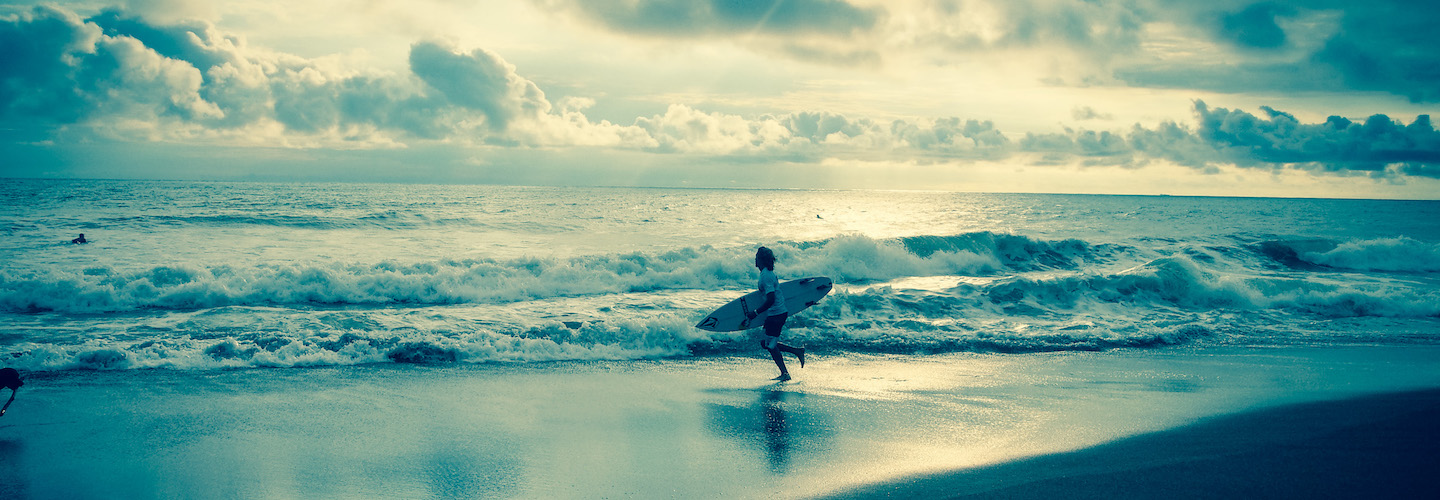
Surfing in
Costa Rica
The best beaches for surf in Costa Rica
Costa Rica has become one of the favorite international destinations for surfing due to its easy ocean access and variety of surf conditions. There are four different zones: the Caribbean coast; the Northern, Southern and Central Pacific coasts.
The Pacific coast has the most surfing areas. The majority of them are found in Guanacaste, in the northwest part of the country, but there are also excellent places in the central and southern areas, as well as the Caribbean coast.
In 2016, for the second time in history, Costa Rica was selected to host the ISA World Surfing Games. Costa Rica beat several other countries competing to host the event, including Peru, Panama, France and the United States. The biggest countries in the world participate in this championship, and last year’s games drew 28 countries whose competitors descended on Playa Jacó for 10 days. Some 200,000 spectators attended.
Thanks to the work of Costa Rica’s Surf Federation, the 2016 World Surfing Games was the second most successful world championship event put on by the International Surf Association, following the 2009 tournament. That year, Costa Rica also hosted the games, which drew 100,000 spectators and 36 participating countries.
Guanacaste
In this area there are three major beaches for surfing. One is Potrero Grande, which offers excellent waves and wind conditions. To get there, there is a boat from Coco Beach (21 miles or 35 km from Liberia). This area lacks services. Visitors should bring food and water. There is also Negra Beach, which has hotels, cabins, and camping areas, as well as restaurants and bars. Visitors can arrive from the northeast, crossing La Amistad Bridge over the Tempisque River. Vehicles with four-wheel drive are recommended for getting there. Another great spot is Witch's Rock, located in the Santa Rosa National Park. Its fast waves with perfect tubes make it a favorite; however, toward the Naranjo River crocodiles often have been spotted! It is accessible by land or sea; if going by land, a four-wheel drive must be used due to road conditions. Other beaches recommended for this sport are: Naranjo Beach, Grande Beach, Tamarindo, Langosta Beach, Avellanas, Junquillal, and Nosara.
Central Pacific
The main focal point for surfers is Jaco, which offers an enormous variety of hotels and lodging as well as restaurants, bars, entertainment centers, and shopping. Among the most recommended beaches in the Central Pacific are Escondida Beach and Boca Barranca. The latter is one of the favorites because of its long wave measuring around 3,117 ft. (950 m). Another noteworthy option is Hermosa Beach, which is known for having some of the most consistent waves in the world. Other surf-friendly beaches in this area include Esterillos, Palo Seco, Roca Loca, Bejuco, Dominical, Damas Island, and Manuel Antonio, among others. Hotels, cabins, restaurants, and other facilities are available at all of the above beaches and, generally speaking, public buses provide easy access.
Southern Pacific
Located some 12 miles (20 km) from Corcovado National Park, Cabo Matapalo offers world-class waves. To get there, there is a shared taxi that departs from Puerto Jimenez every day or an all-terrain vehicle that easily takes on the various river crossings. Continuing along toward southern Golfito is Pavones Beach, which has one of the best waves in the world, running more than half a mile (1 km) long. Transportation is available by air or land. Along the highway that runs south, parallel to the coast, is Punta Banco, a series of beaches with left and right breakers for 2.5 miles (4 km), which makes it very popular among surfers, although it is not ideal for swimming. Simple lodging is available. Access is difficult, so it is recommended to use an all-terrain vehicle.
The Caribbean
One of the most frequented beaches by surfers is Puerto Viejo, also known as Salsa Brava due to its strong waves and huge tubes. Only experienced surfers should attempt this spot. 1.2 miles (2 km) away is Cocles, another beach with good waves as well as cabins that are popular among surfers. There are also lifeguard posts. Bonita Beach and Uvita Island also possess world-class waves. However, these areas are only accessible by boat. For something calmer nearby, Manzanillo has a variety of lodging options and beaches suitable for surfing such as Punta Mora and Grande Manzanillo Beach.
Costa Rica, with its 908 miles (1,466 km) of coastline, has more areas for surfing than surfers can imagine. Along both coasts, there are almost always great conditions for surfing.
For your safety:
- Before entering the waters, become familiar with beach characteristics like dangerous currents, weather conditions, waves, and type of ocean bed (sand or coral), etc.
- Always remember to wear a leash in order to keep your board close to you, for your safety, as well as that of others.
- Always be aware of ocean conditions since it is a dynamic environment that can change easily.
- Never surf in areas that are beyond your skill level. There are certain beaches that are suitable only for experts due to their risk.
- If you are a beginner, look for areas to surf where there are few people and avoid running into swimmers.
- If there are other surfers in the area, respect their space.
- If quick surf lessons are offered, make sure that the instructor is an expert; if it is a company, make sure it is certified.
- Do not leave your belongings unattended on the beach.
- Always use sunscreen to avoid burning.
- Crocodiles can be found on some beaches. Ask a coastguard, Red Cross personnel, or locals if they can be found in the area.
Costa Rica's best places for surfing
On the map you'll find Costa Rica's tourism regions, where you can participate in these activities. For more information on any of these activities, contact your travel agent or hotel.
